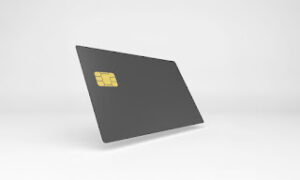The healthcare sector is constantly evolving to incorporate the latest digital innovations, with multi-app kiosks now at the forefront of this transformation. These interactive, self-service tools are increasingly being deployed across healthcare settings to create a more efficient and engaging patient experience.
Multi-app kiosks are essentially digital stations that host multiple applications for various uses, thereby enhancing the range of services provided to patients. These kiosks can perform a myriad of functions – from checking patients in and updating their information to dispensing medication and providing telemedicine services. They are changing the face of patient engagement, creating more convenience for patients while also freeing up valuable time for healthcare staff.
1. Streamlined Check-in Process:
One of the most significant benefits of multi-app kiosks is their ability to streamline the check-in process. Instead of waiting in long lines, patients can now register their arrival, update personal information, and even pay their co-pays through these kiosks. The automation of administrative tasks significantly reduces wait times and contributes to a positive patient experience.
2. Empowered Patient Decision-making:
These kiosks can provide patients with access to a wealth of information, such as detailed explanations about their condition, treatment options, and medication details. Having this information at their fingertips can empower patients to make informed decisions about their healthcare journey.
3. Enhanced Patient Privacy:
Patient privacy is a crucial consideration in healthcare, and multi-app kiosks can bolster this aspect. Patients can privately enter sensitive health information directly into the kiosk, minimizing the risk of sensitive information being overheard or miscommunicated.
4. Personalized Patient Engagement:
Multi-app kiosks can be programmed to provide personalized healthcare information based on individual patient profiles. They can offer tailored health tips, show relevant health education videos, or provide updates on new treatment options, thereby fostering active patient engagement.
5. Improved Accessibility:
For patients with mobility issues or those who need assistance, multi-app kiosks can offer improved accessibility. Many kiosks are ADA compliant, and offer features such as adjustable height, Braille keyboards, and voice-assisted navigation.
Implementing multi-app kiosks, however, is not without challenges. Healthcare organizations must ensure that these tools are HIPAA compliant and that patient data remains secure. User-friendliness is another crucial factor. If a kiosk is difficult to use, patients may feel frustrated and choose not to use it, thus defeating its purpose.
To successfully integrate multi-app kiosks into a healthcare setting, organizations should consider the following:
User Experience Design:
Kiosks should be intuitive and easy-to-use. They must cater to all patients, including those who are less tech-savvy. Clear instructions and a user-friendly interface can help overcome this challenge.
Data Security:
It’s essential to ensure that patient data is secure. Encryption of data, secure user authentication, and regular audits can help maintain the highest level of data security.
Regular Maintenance and Updating:
Regular maintenance and software updates are vital to keep the kiosks functioning smoothly and securely.
In conclusion:
multi-app kiosks can play a pivotal role in improving patient experience and engagement in healthcare settings. By streamlining processes, providing detailed health information, ensuring privacy, and offering personalized engagement, these kiosks enhance patient satisfaction and improve healthcare outcomes.
As with any digital tool, user experience and data security are critical considerations in the deployment of multi-app kiosks. But with the right design and safeguards, these innovative tools can truly revolutionize the patient experience.
Ultimately, multi-app kiosks are not just about leveraging technology; they’re about putting patients at the center of care. By providing patients with the tools to manage their healthcare journey, these kiosks are making healthcare more accessible, efficient, and patient-centric. The result is a more engaged patient population, a more streamlined healthcare process, and a stronger, more responsive healthcare system.



































